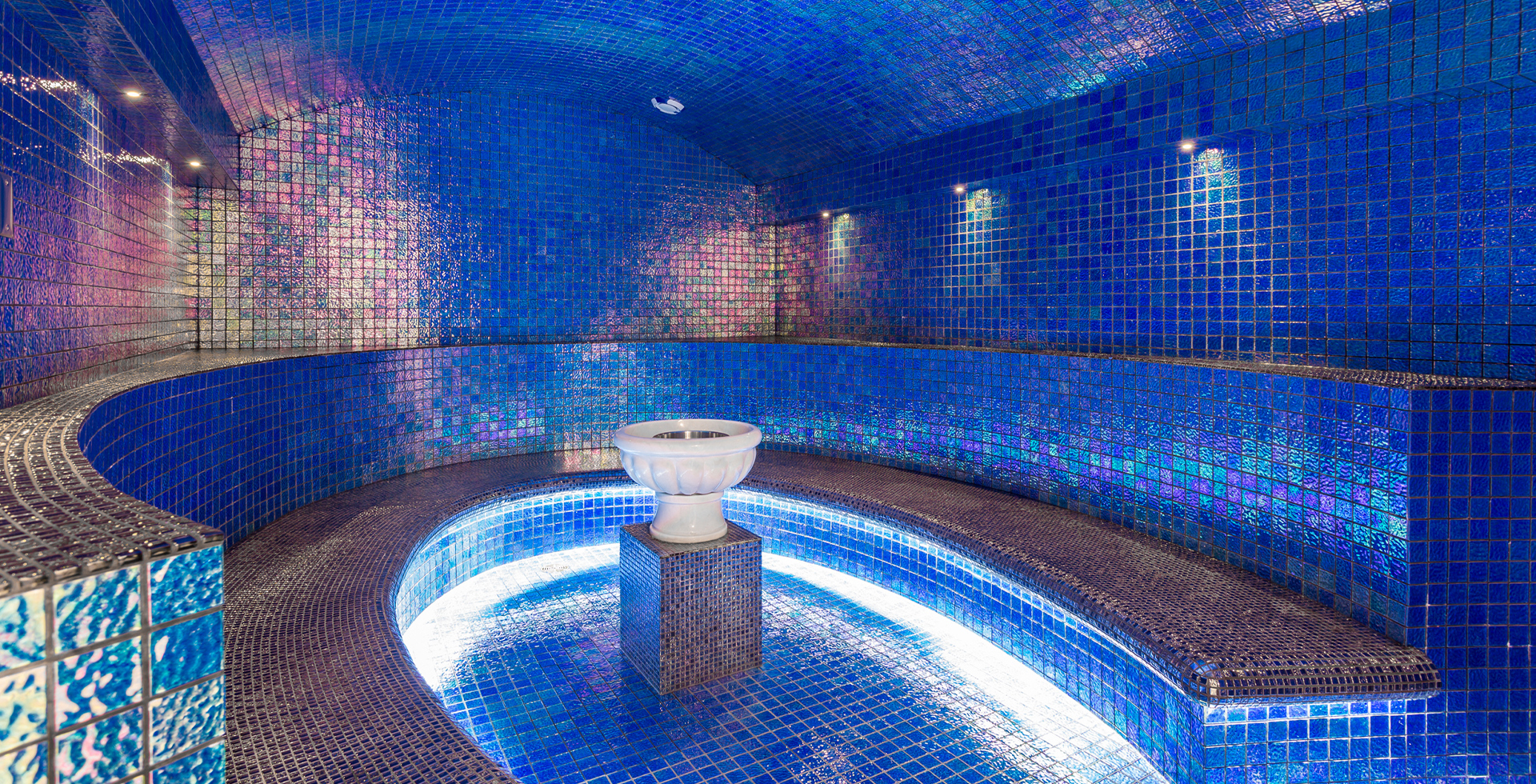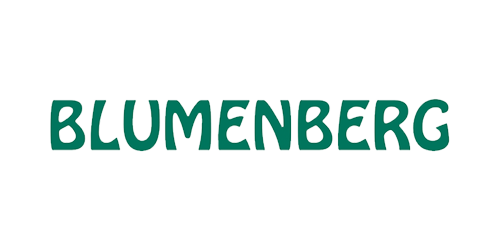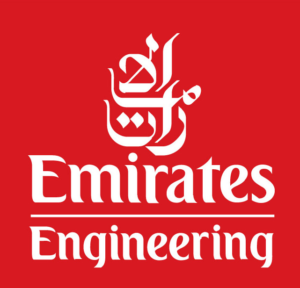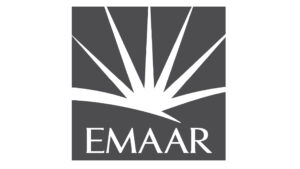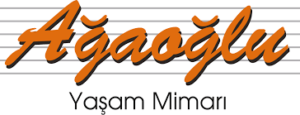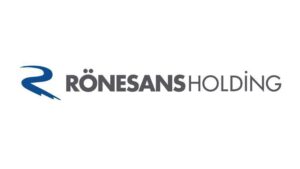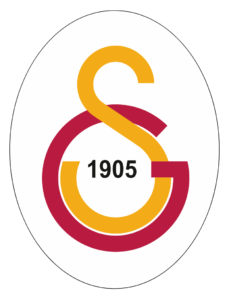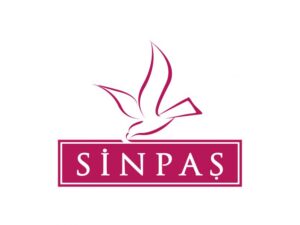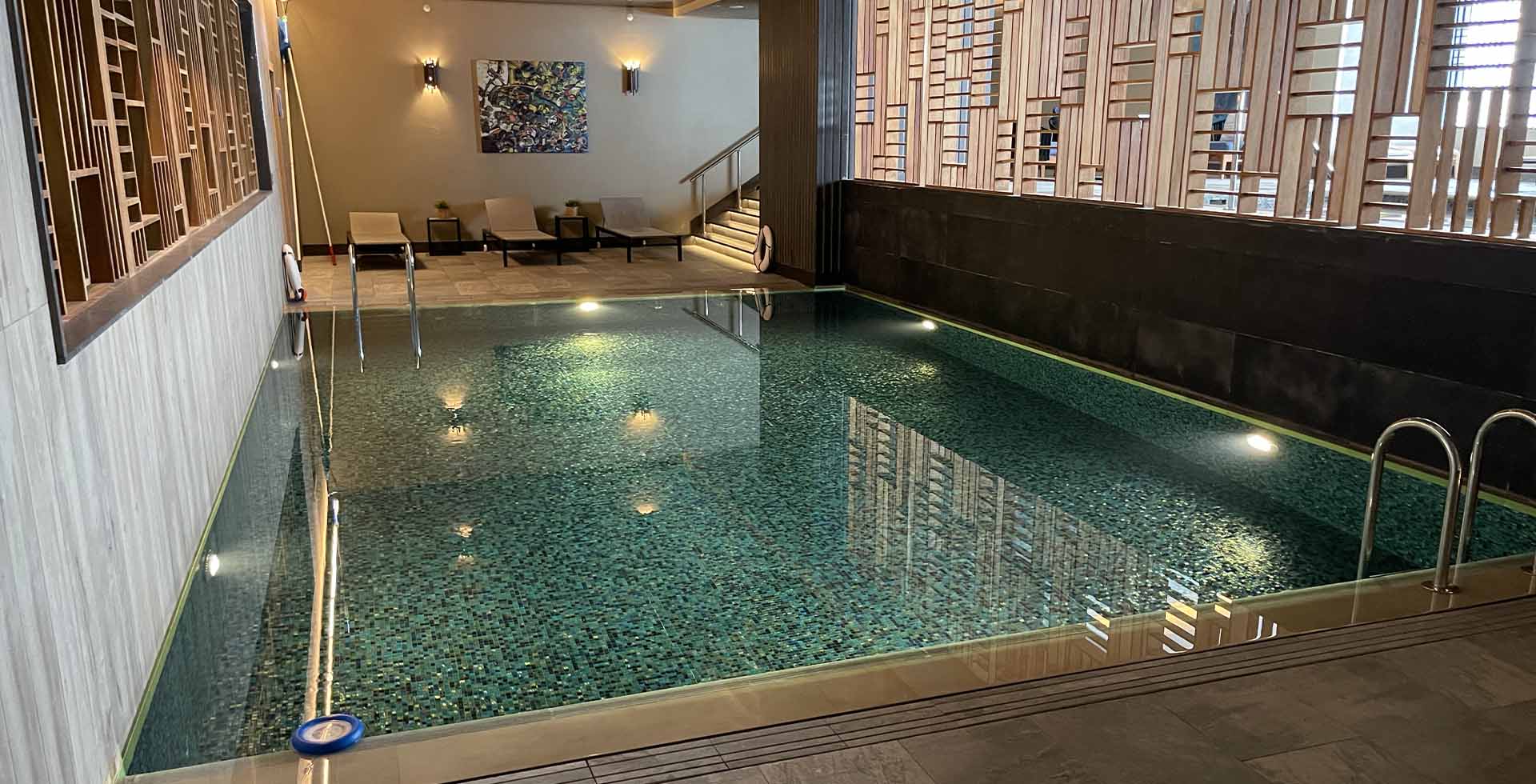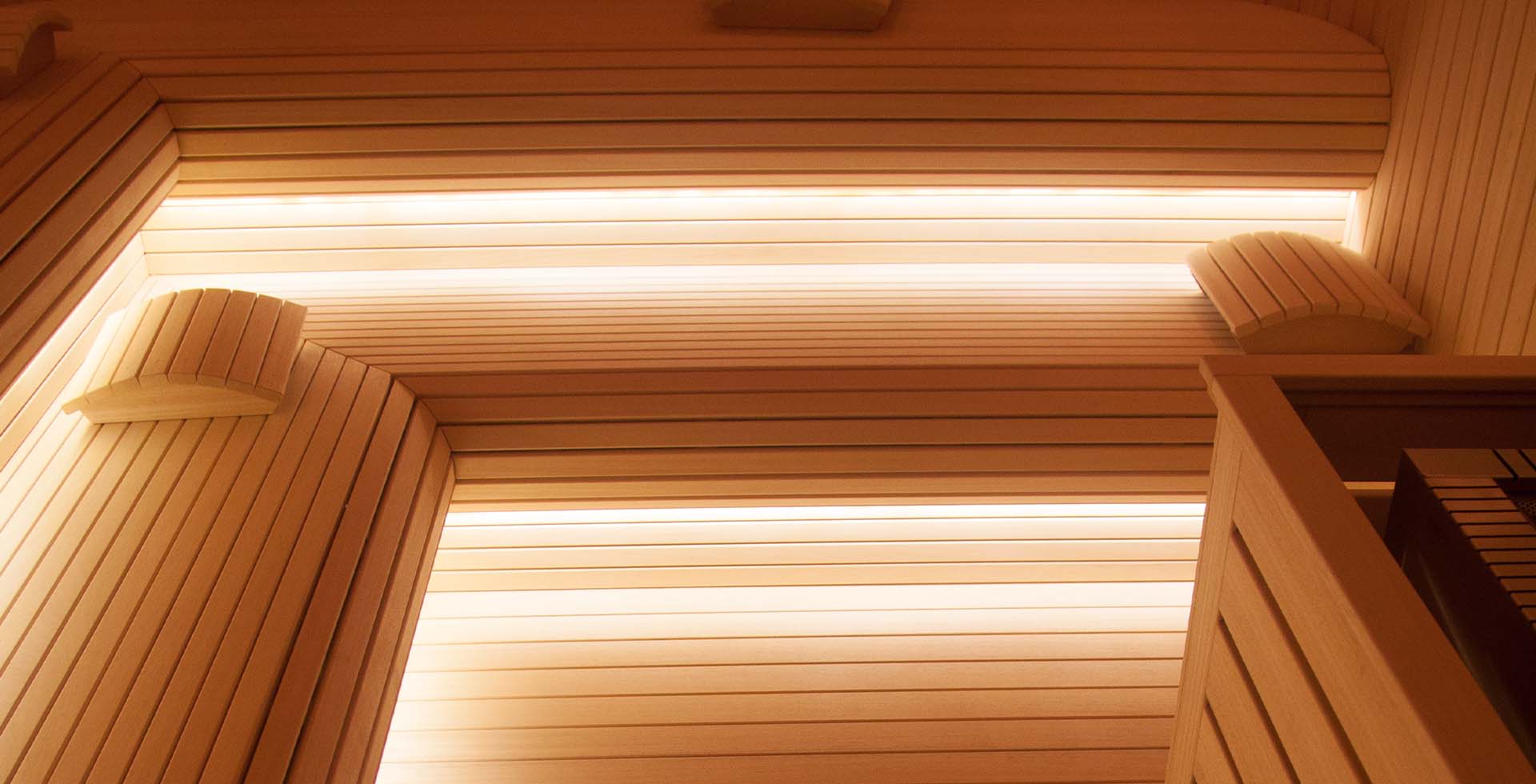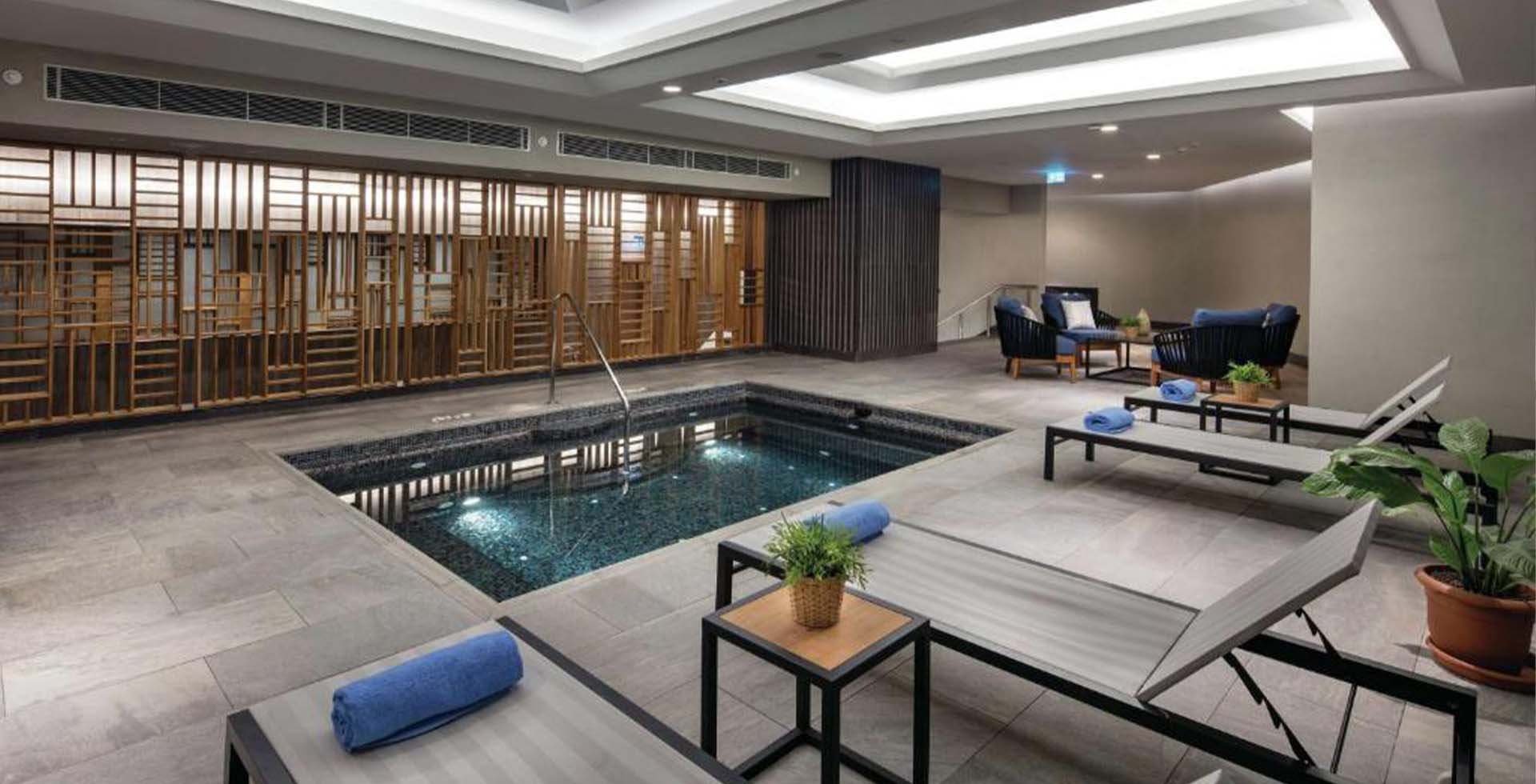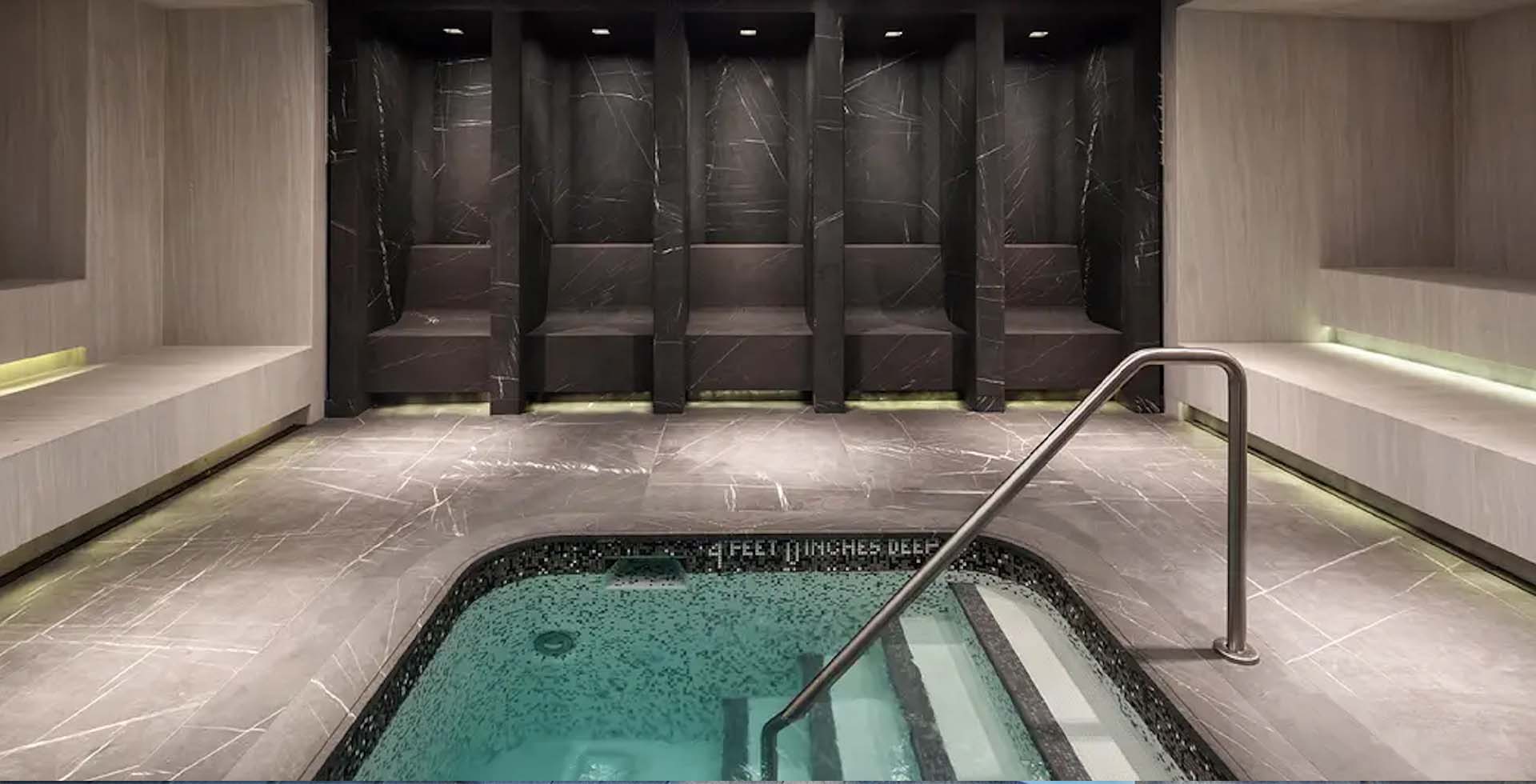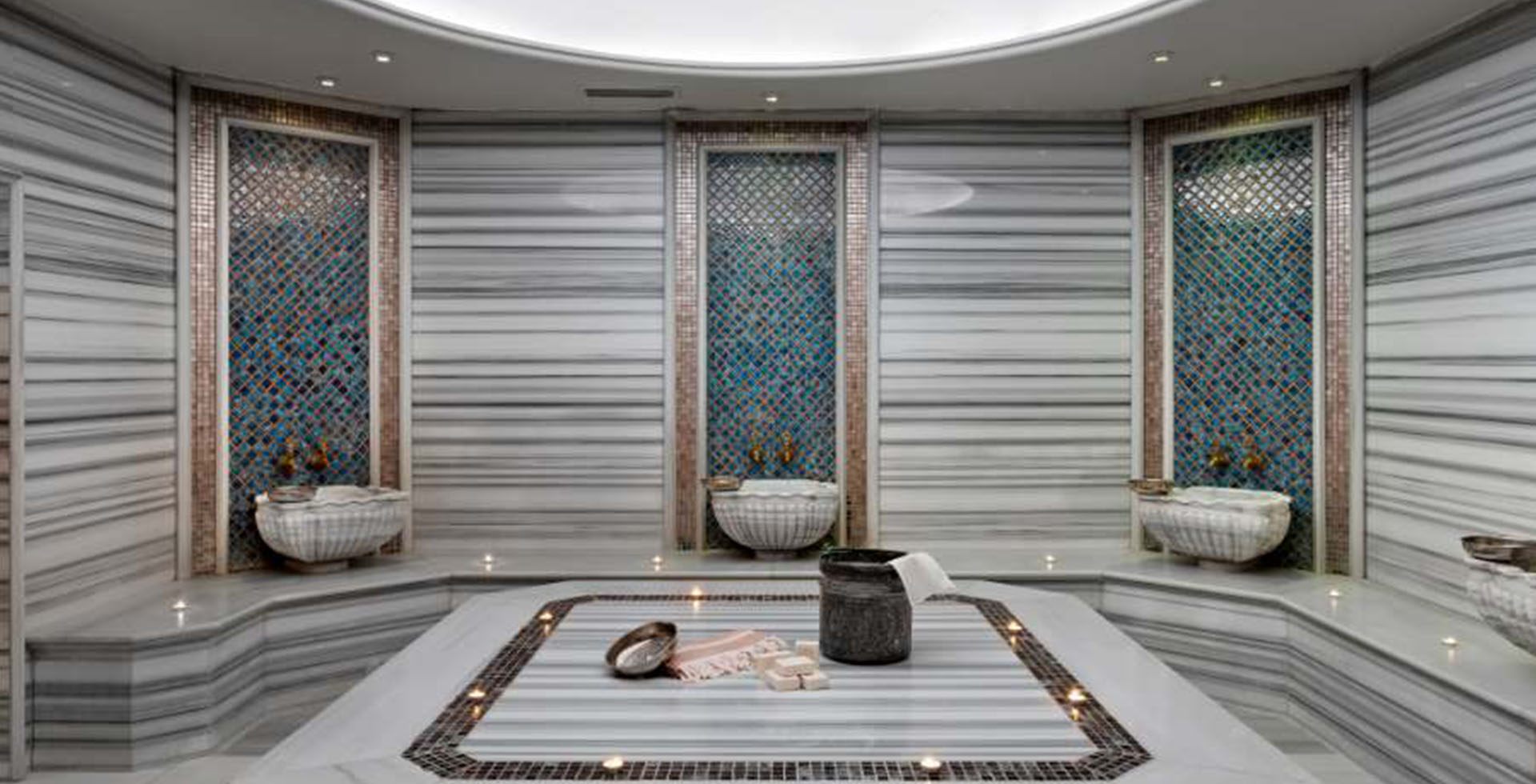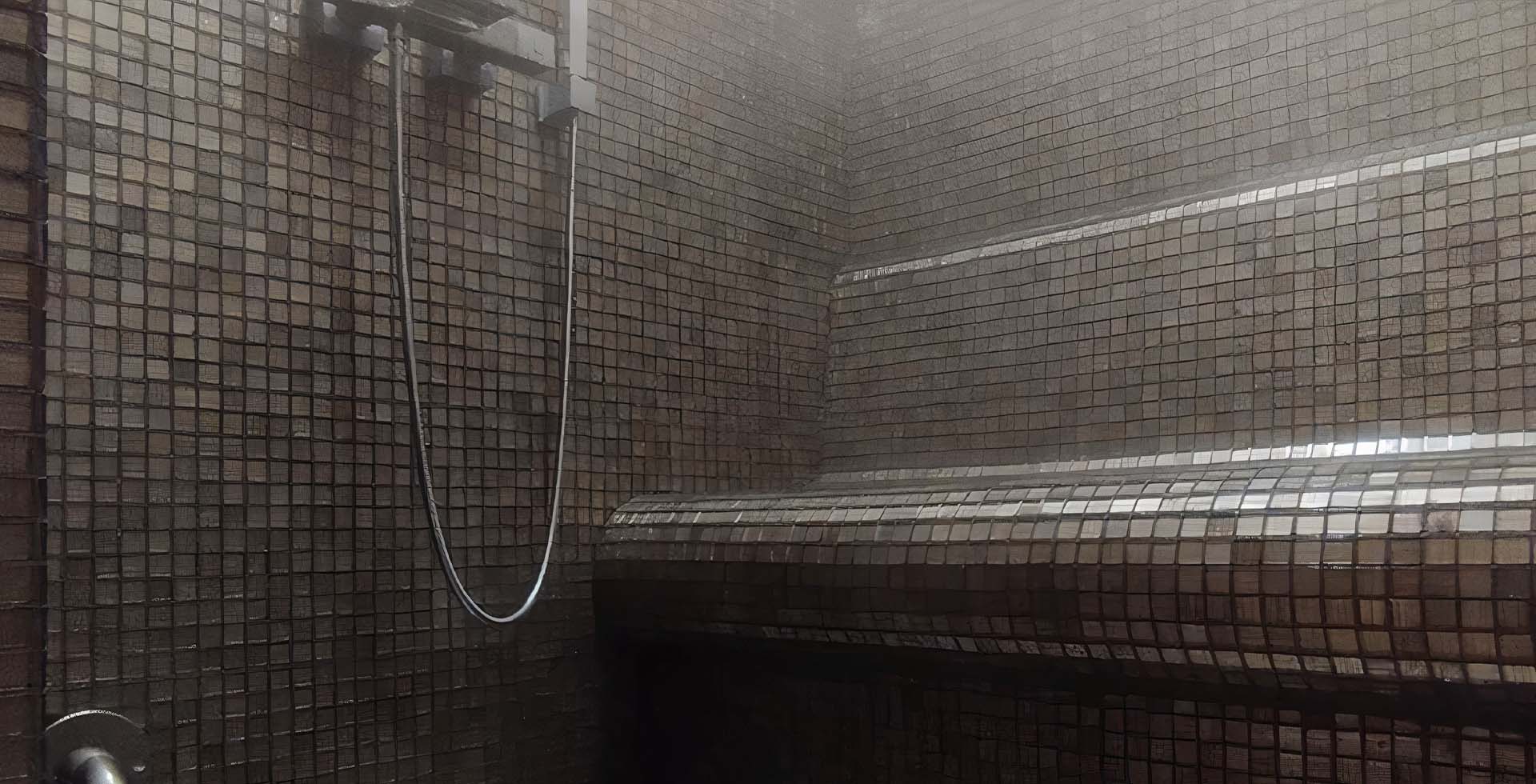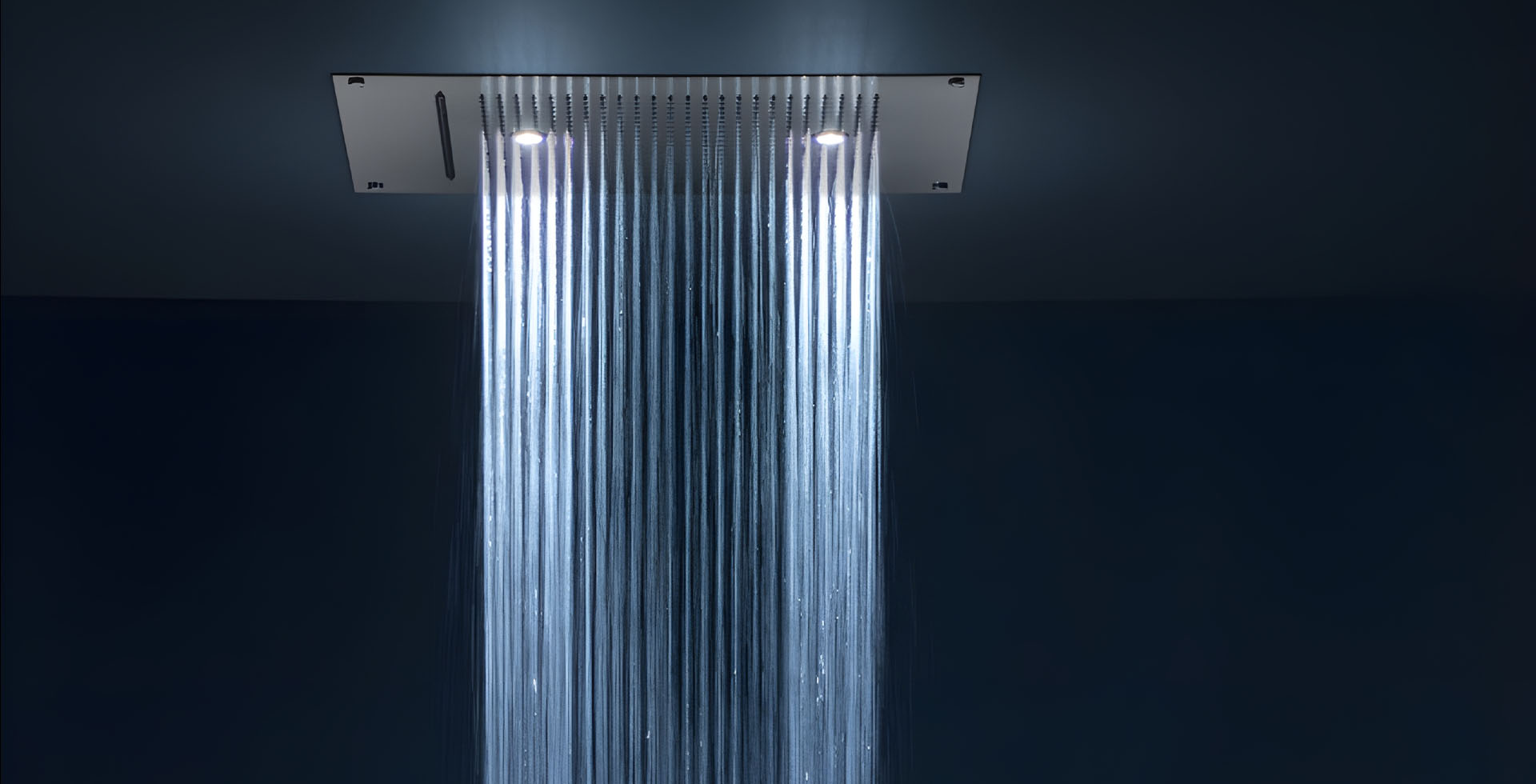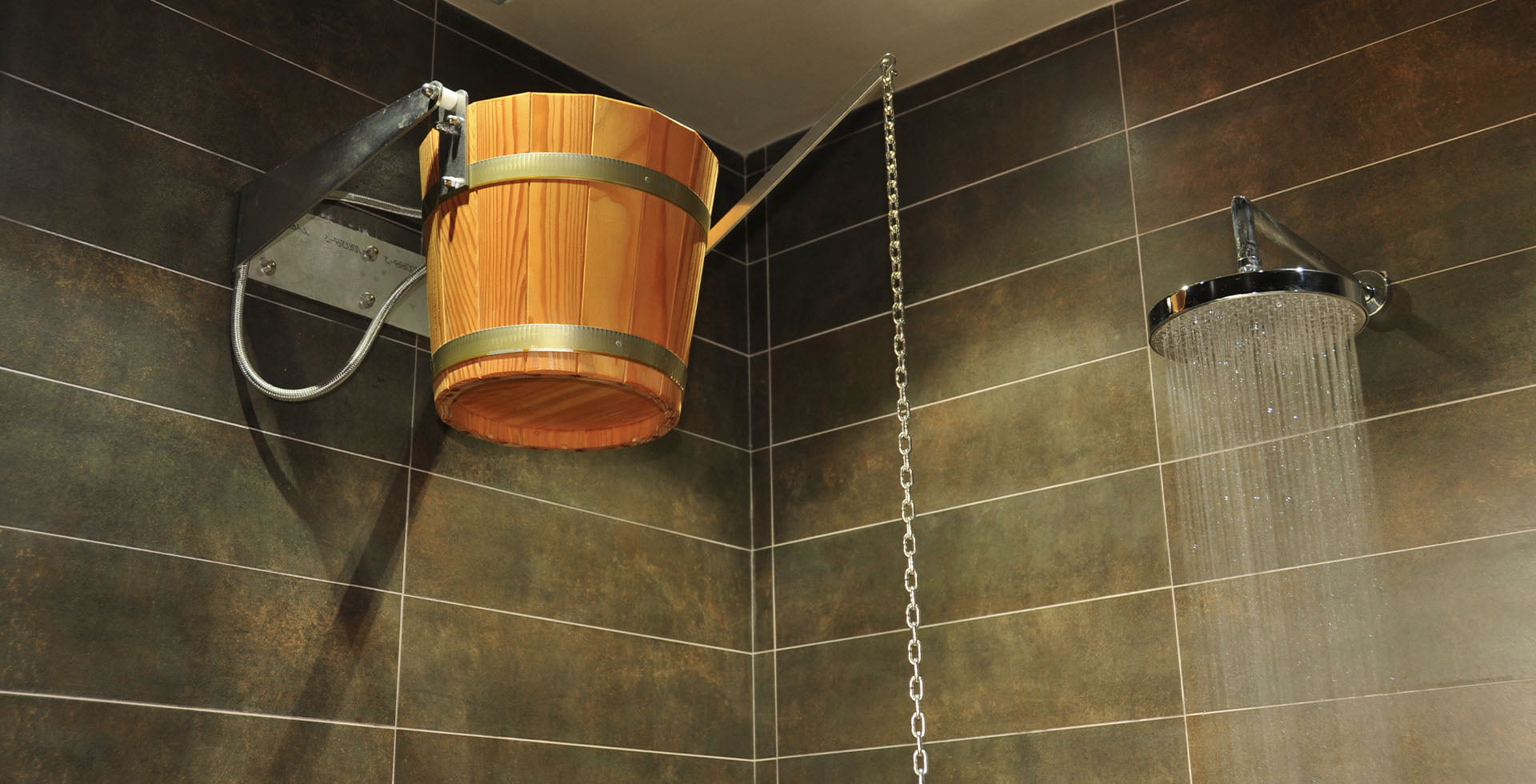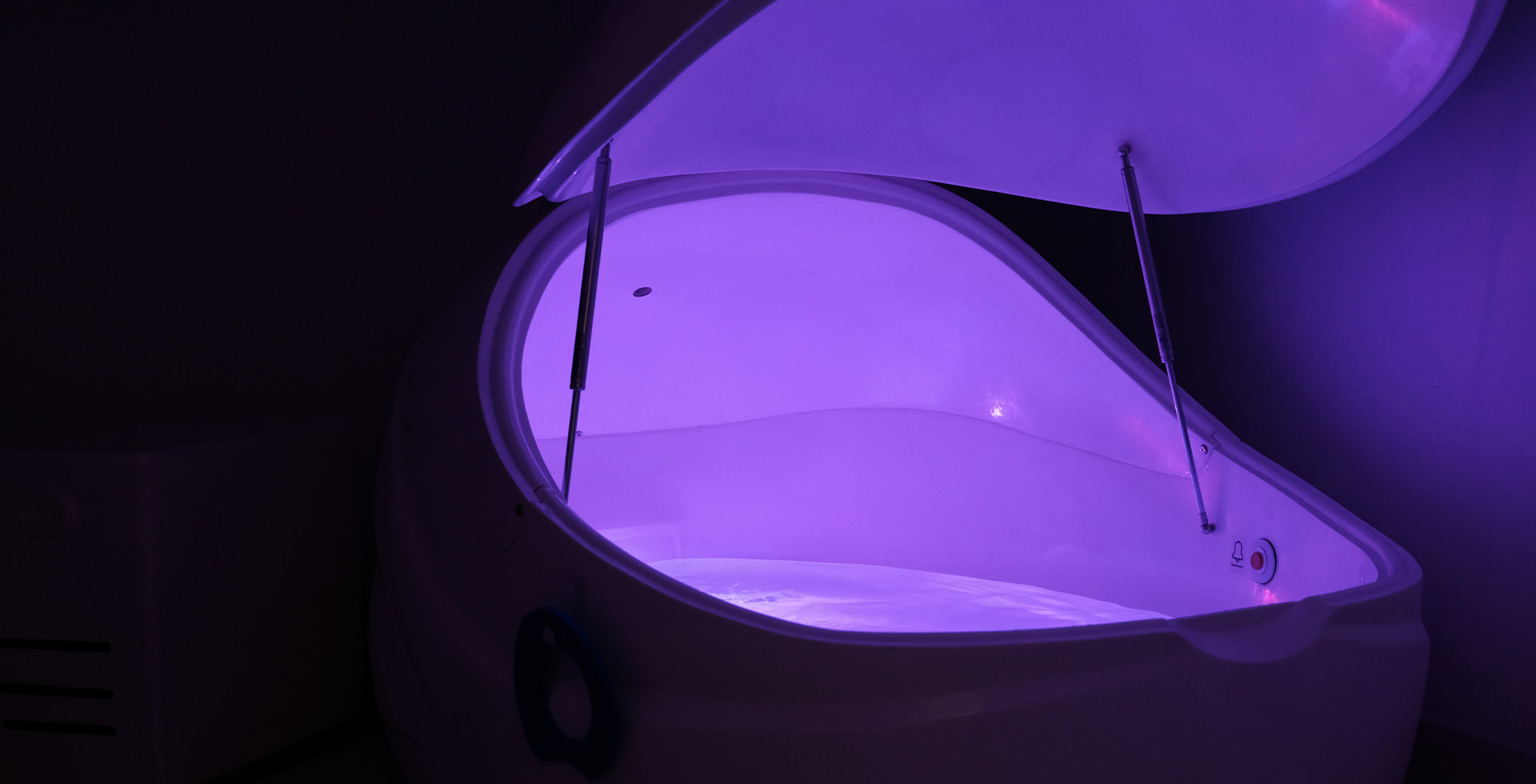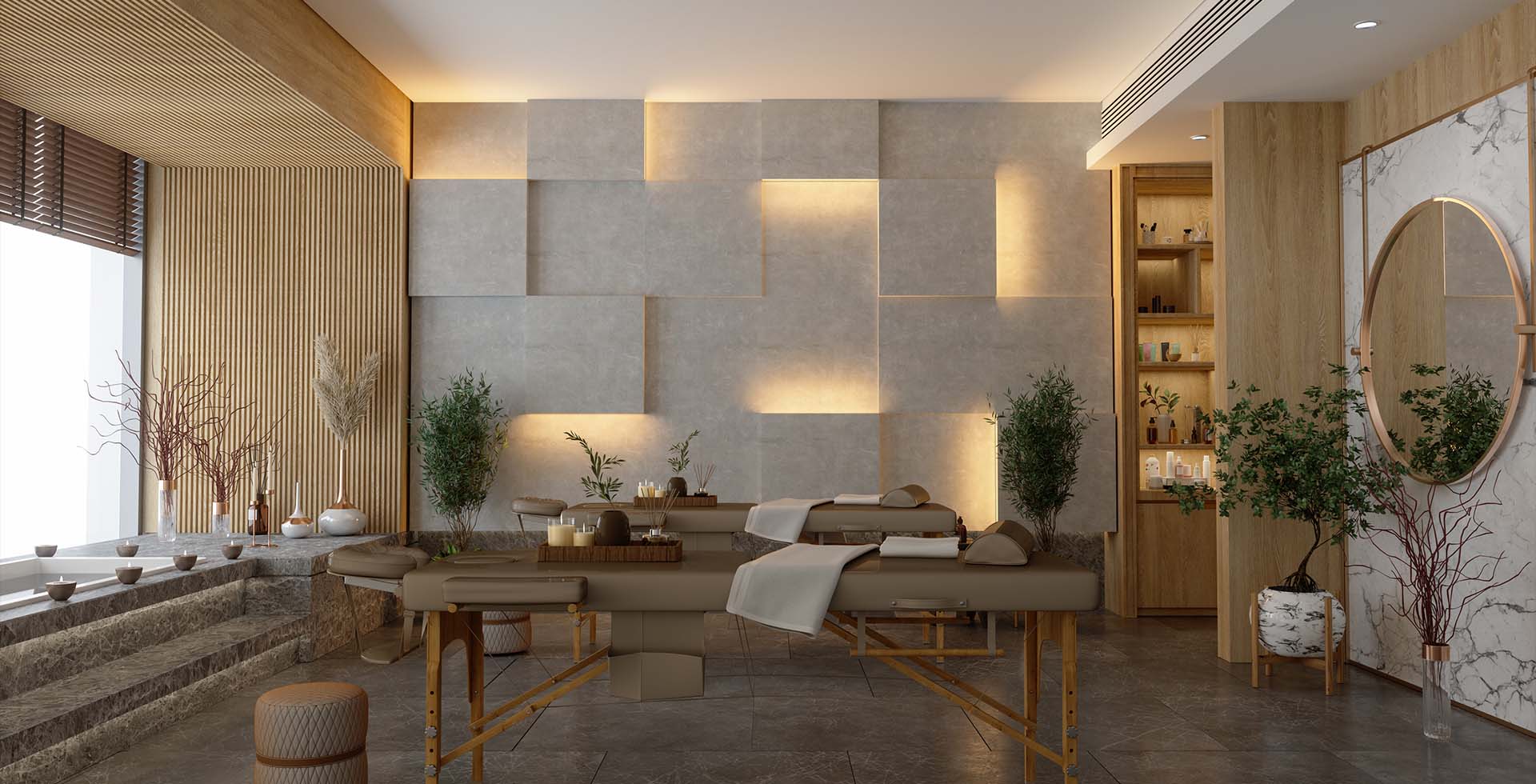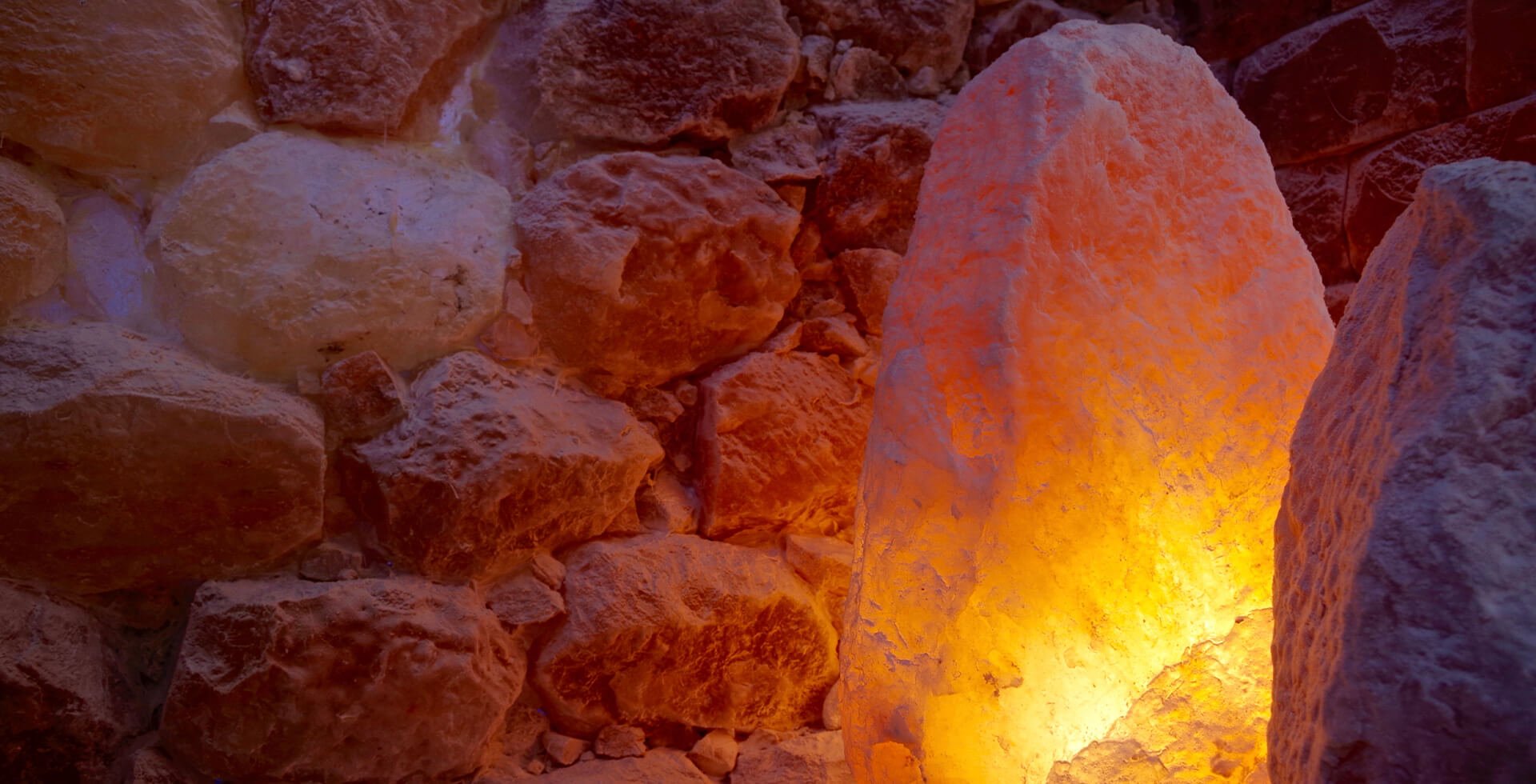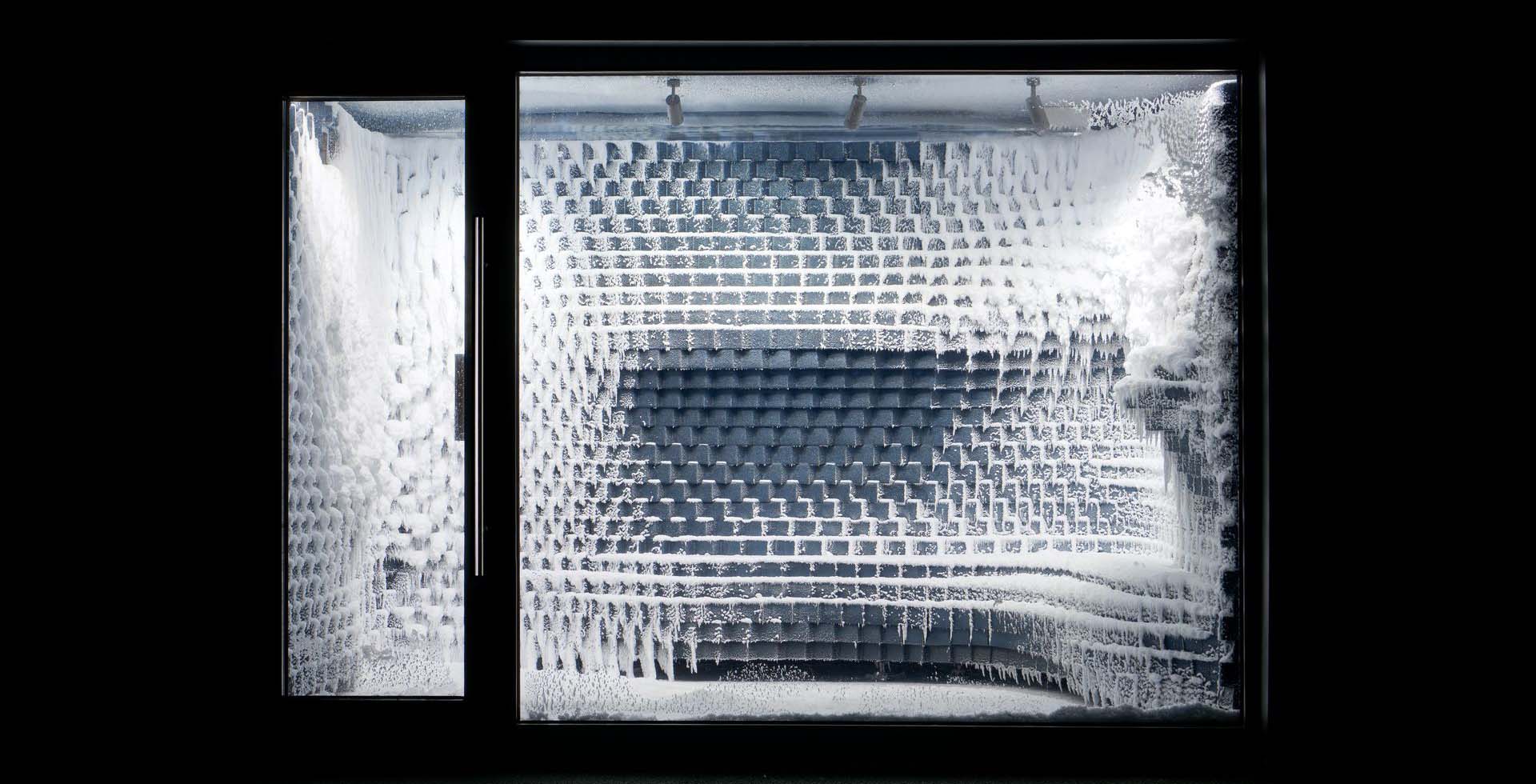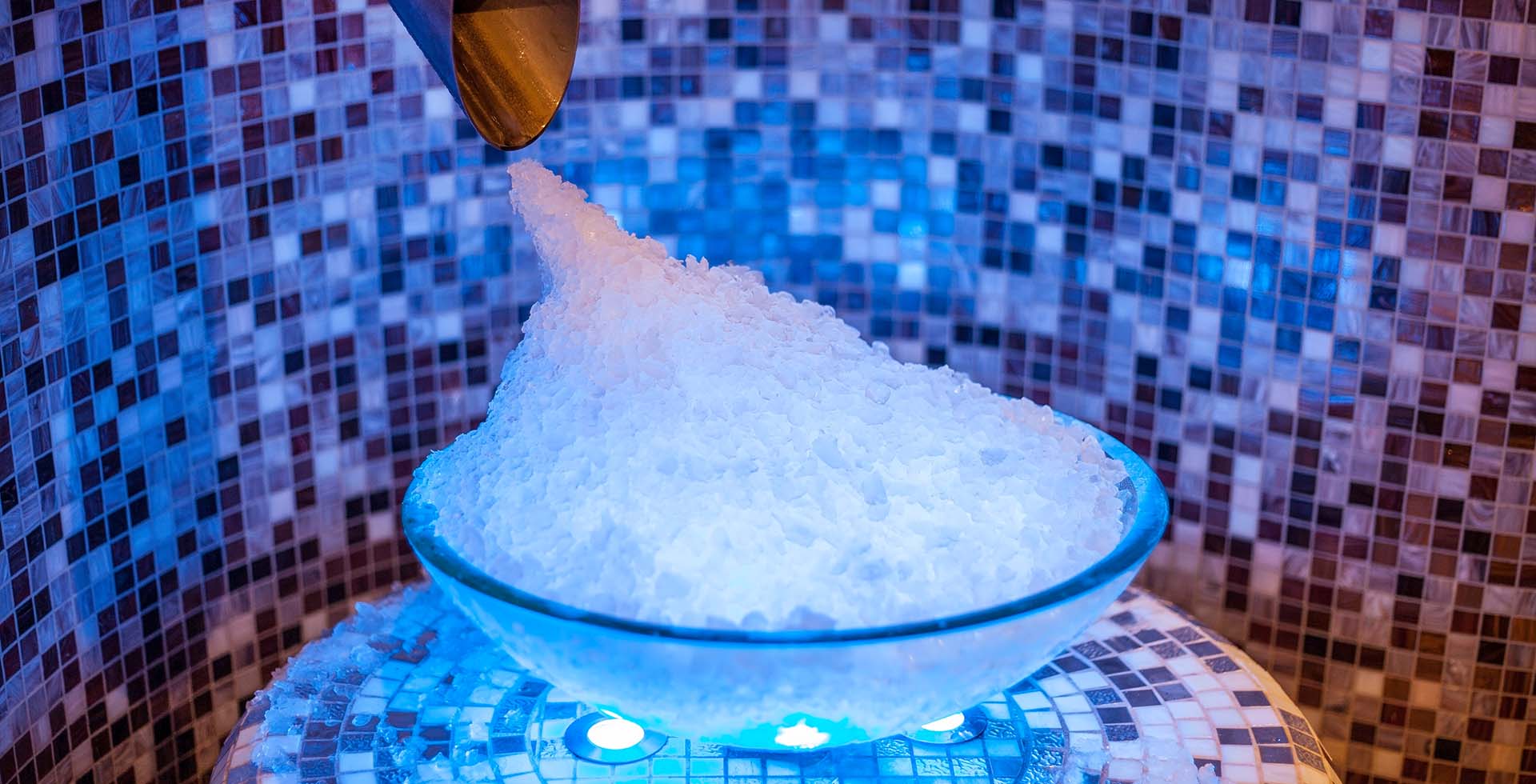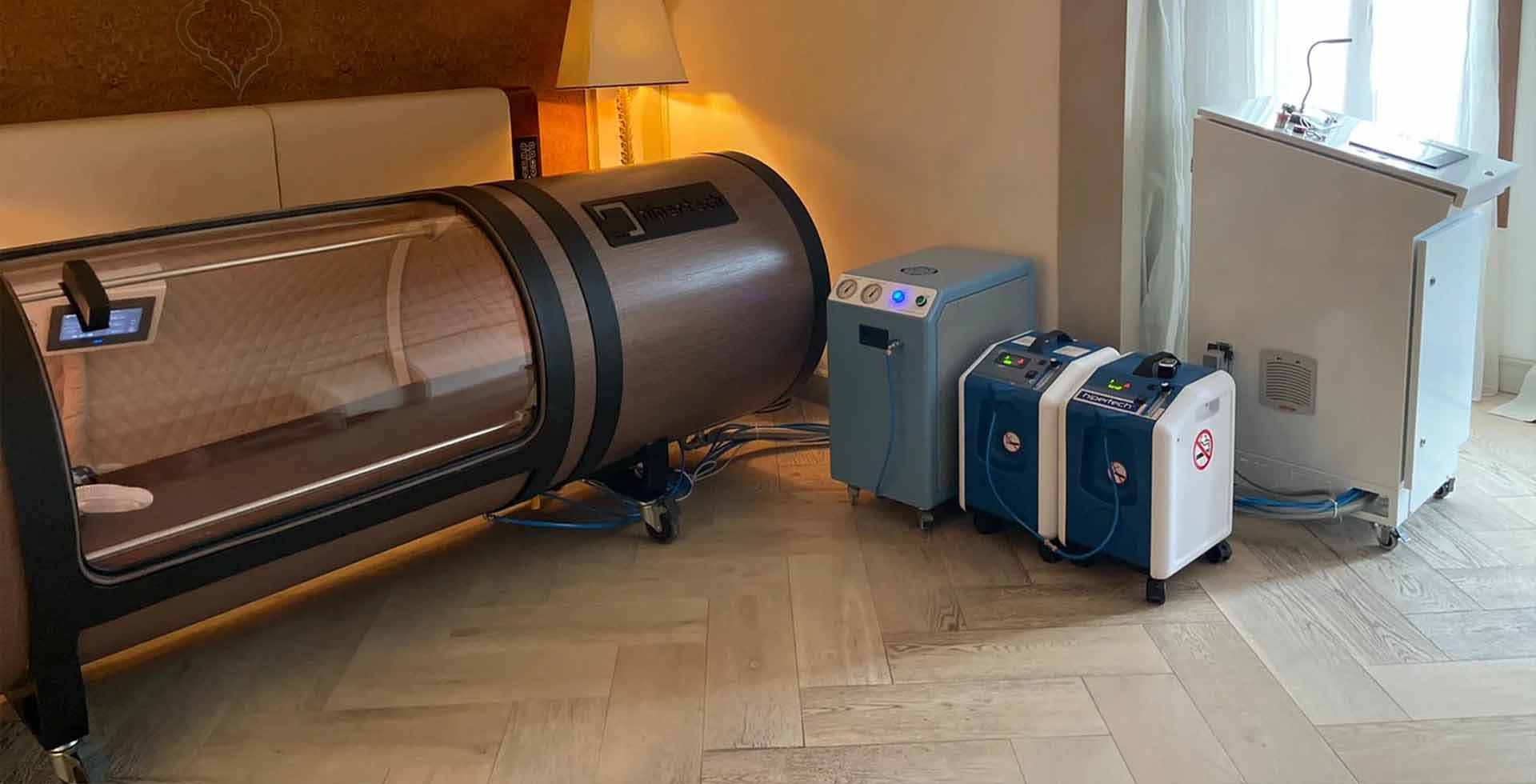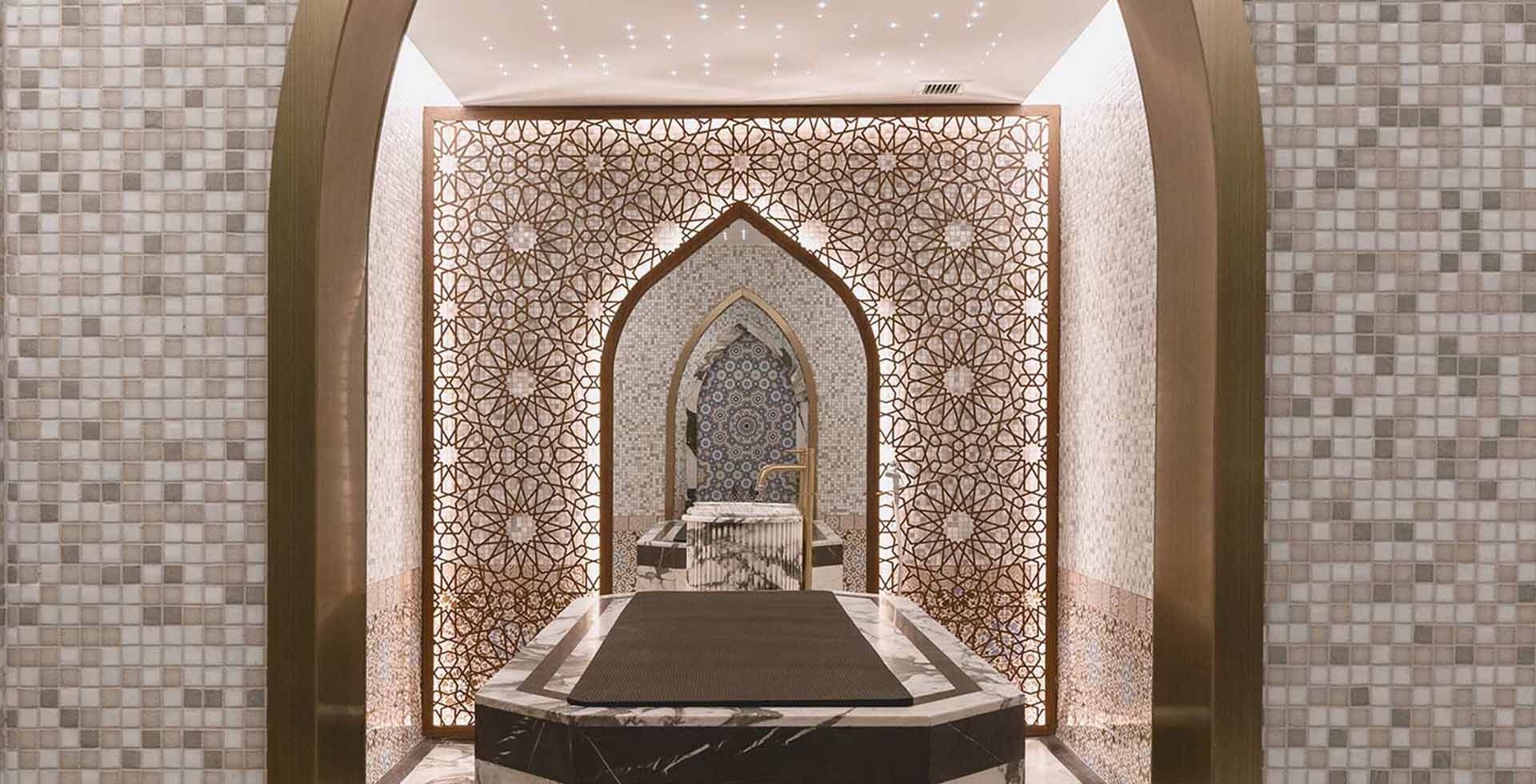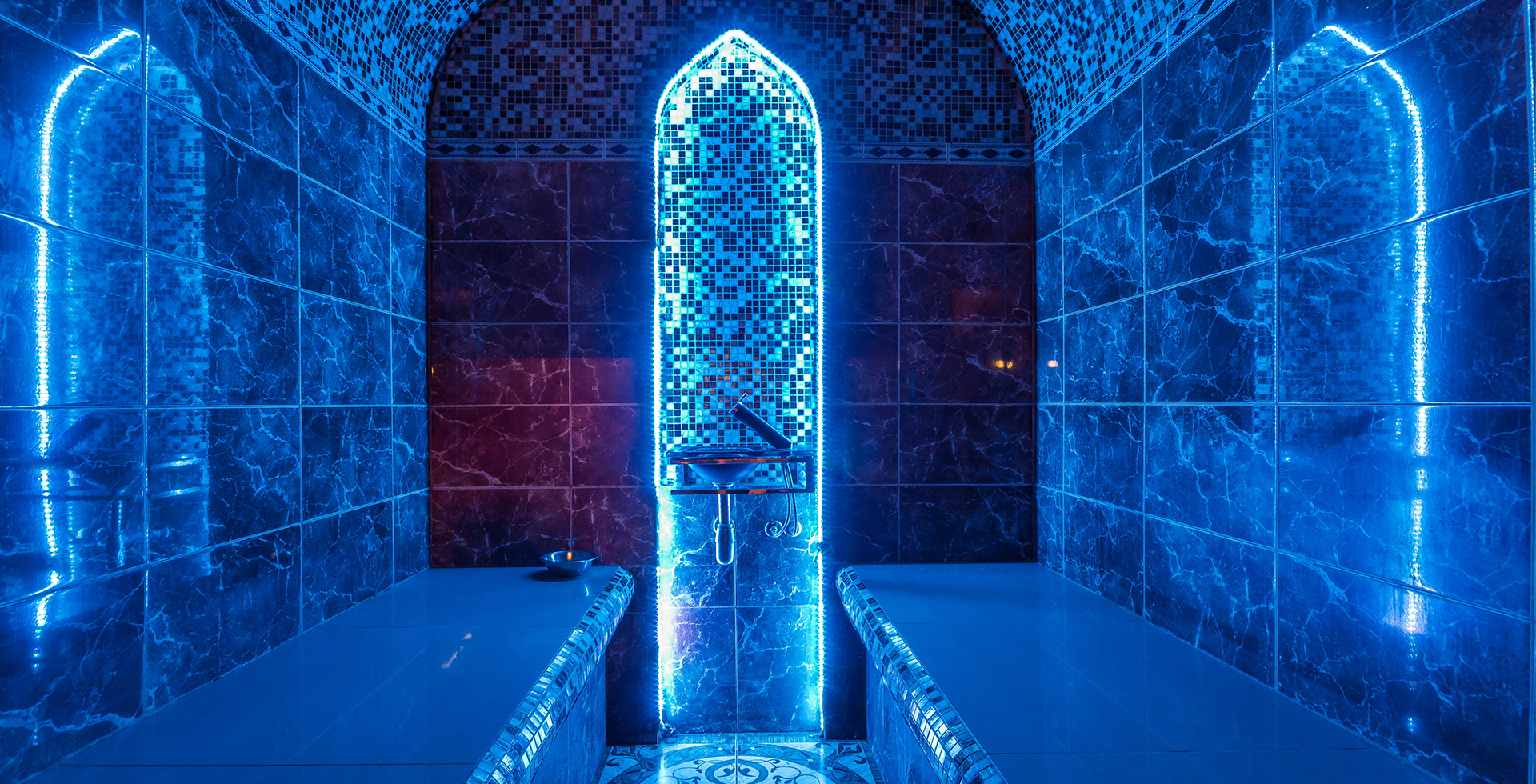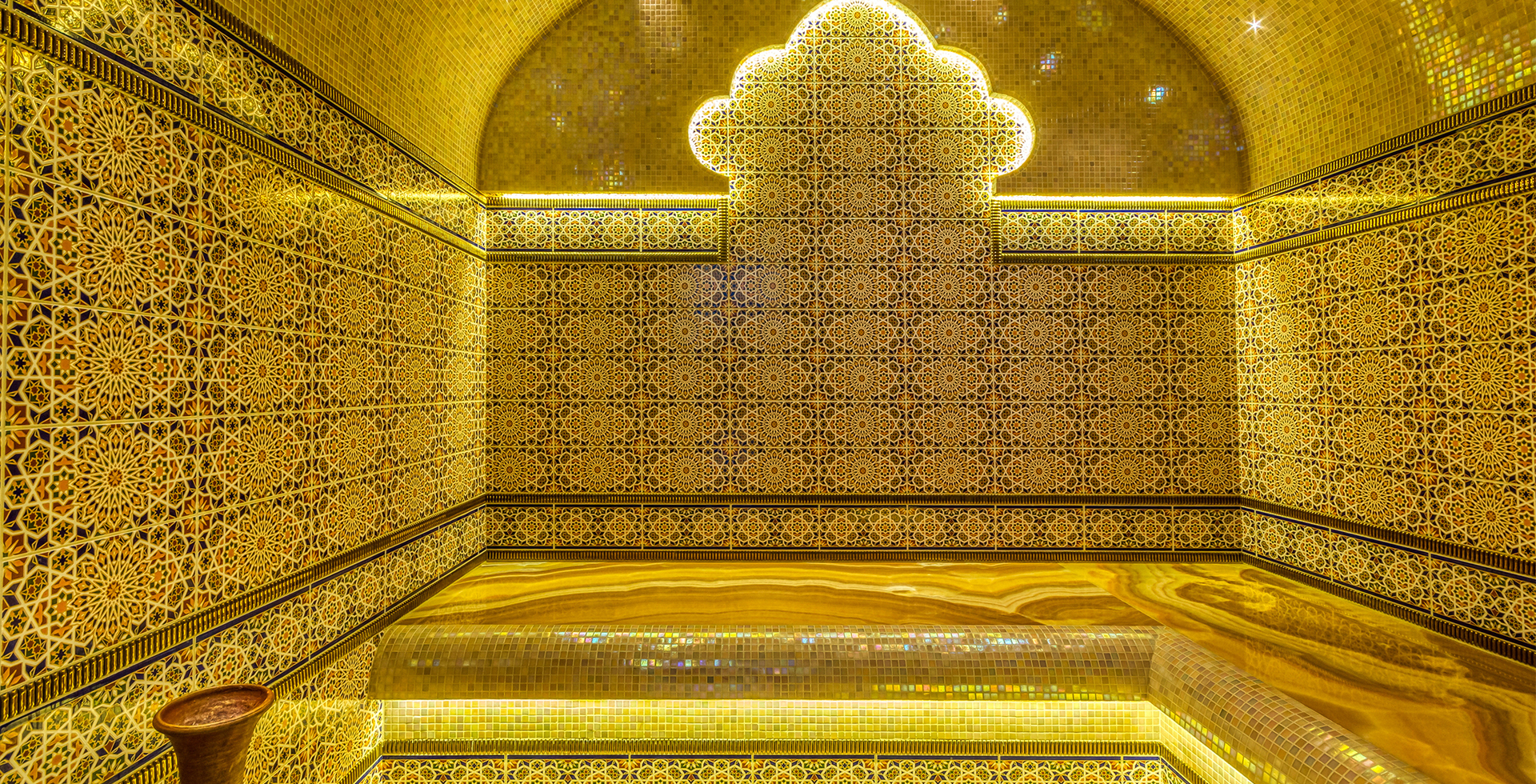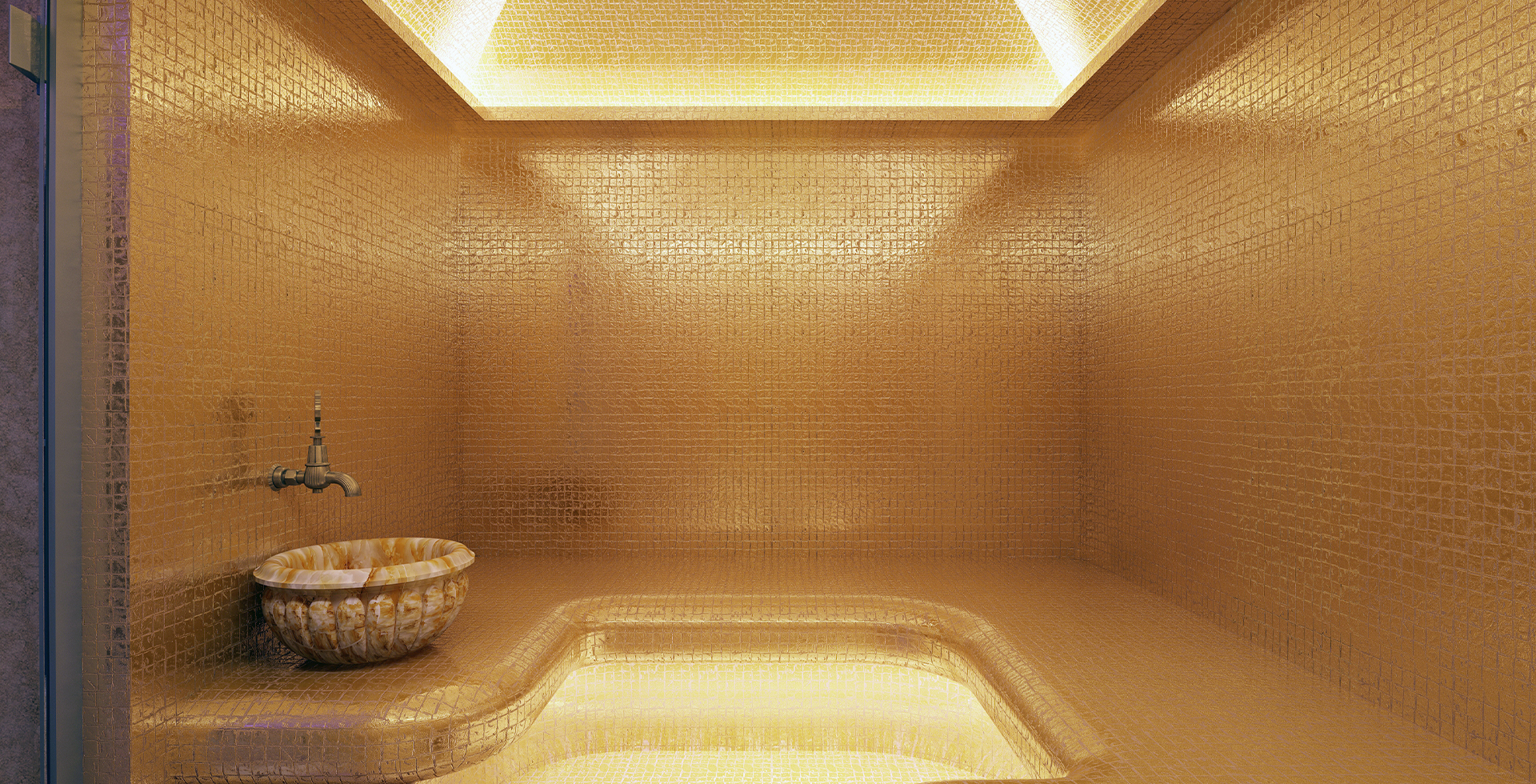Moroccan
Bath
The Moroccan Bath
Temperature: between 38° C to 42° C Humidity: 50% to 80% relative humidity
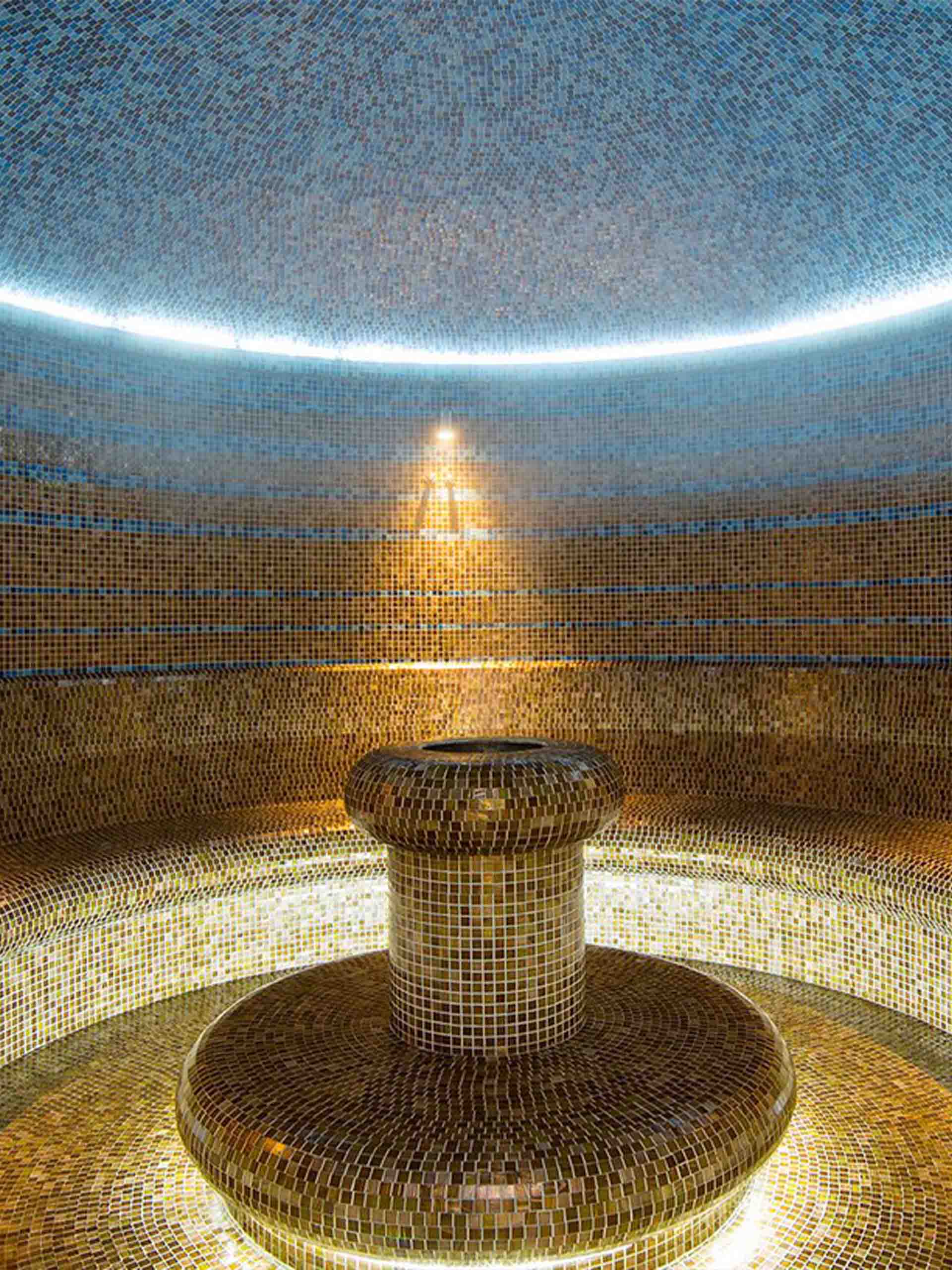
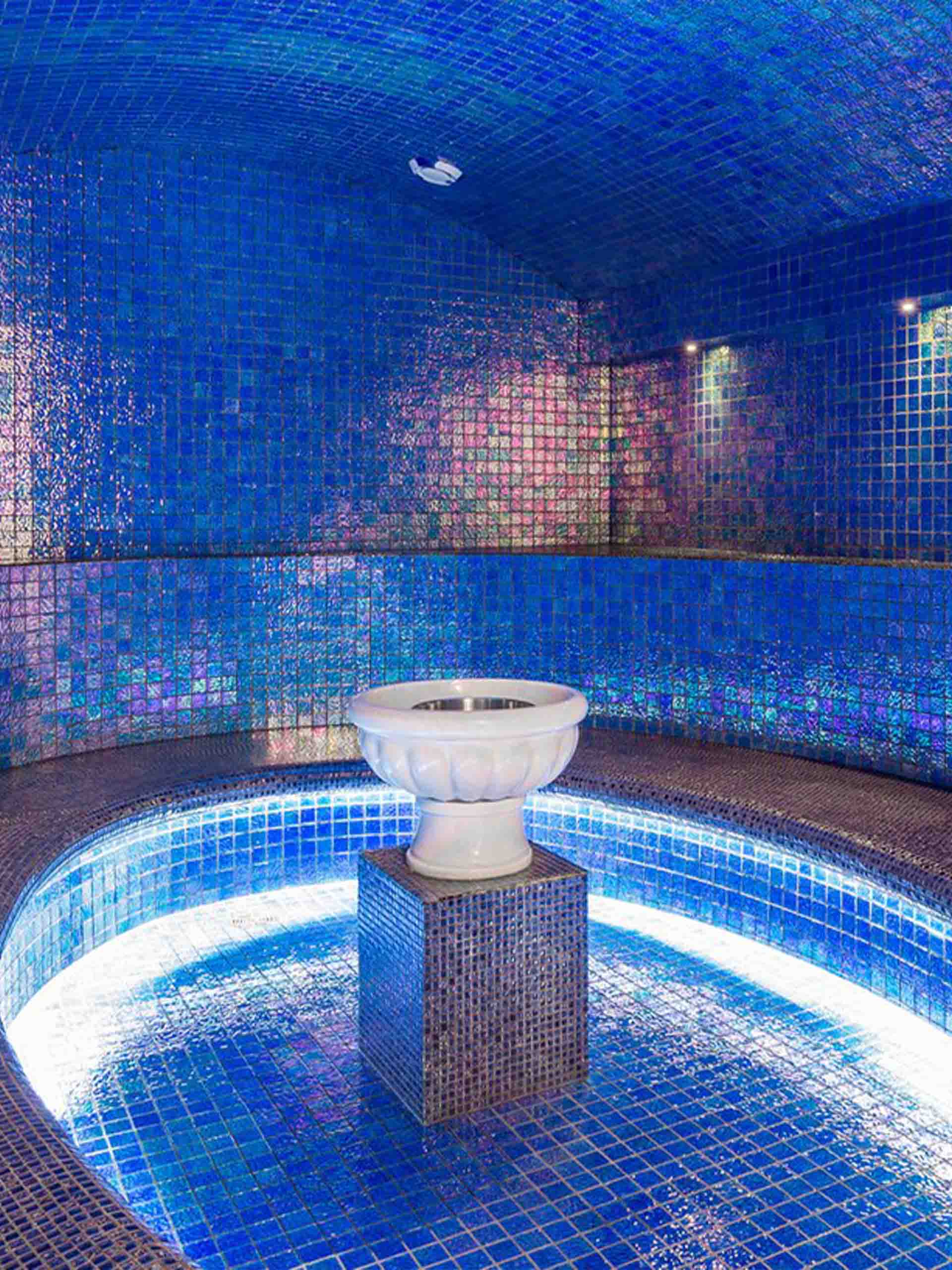
Heat/humidity, followed by a full-body, sticky, black soap massage and exfoliation with a "gome" glove; and then, frequently, a terracotta foot stone rub and rinse; and a clay/mud application to body, face, and hair (and rinse or soak). Argan oil application is often followed. In Turkish, the word "hamam" literally translates as "bathroom" and refers to the complete Turkish bathhouse. Hammams are classified into three types: Turkish bath, Moroccan bath and Modern hammam.
How to Make a Moraccan Bath?
A moraccan bath is a massive domed edifice with a central room (sikaklek) that features the belly stone (göbek tasi). Traditional attendants scrub and clean bathers on the belly stone, and there are typically little chambers off the great central space for richer clients to be treated privately—these architectural elements are commonly adopted in modern hamams for private treatments. There are several basins (called kurnas) around the room that provide water for washing and rinsing, as well as lots of seat space where bathers may rest and converse while waiting for treatments. A Moroccan hammam is comparable to its Turkish counterpart, but retains more of the original Roman bathing routine, sending the bather through smaller chambers with different temperatures (akin to the Roman voyage through the laconium, caldarium, frigidarium, and tepidarium). It should be noted that the term "moroccan bath" is occasionally used interchangeably to indicate a steam bath or a steam chamber. This is especially popular in France and Switzerland's French-speaking provinces. To be clear, the Moroccan hammam is referred to be a bathing structure in this reference book (including communal and treatment areas).
Common Mistakes
Usage Type
The initial aim of the hamam was cleansing, and cleanliness is still important today. An exfoliating rub with a "kese" (Turkish) or "gome" (North African) mitten, a soap massage (black soap in North Africa), and a hair wash are typical treatments. Furthermore, most bathers' primary aims are socialization and relaxation.
Health Advantages
The hot air temperature and warmth of the treatment surface (whether a classic belly stone or a contemporary heated treatment table) reduce muscle discomfort and encourage mental relaxation, while the high humidity causes strong sweating, resulting in thorough cleaning.
Source of Heat
Traditionally, a hypocaust offered warm under-floor heating, which was eventually superseded by hot water "hydronic" systems when piped plumbing systems became available. The floors were frequently heated above body temperature, necessitating the use of wooden sandals (which became significant fashion statements during the heyday of moroccan bath). A contemporary hamam will employ hydronic heating, which is a network of pipes that heats the floor, walls, and benches to maintain a high radiated temperature. The moroccan bath, unlike a steam room, does not function at close to 100% humidity. However, a high degree of humidity is necessary (50% to 80%), which was typically created by the vast volume of water used in the treatments and evaporating off the heated floors and seating/treatment surfaces. Because today's customers aren't always comfortable with public bathing routines, massage, exfoliation, shaving, and hair washing may be performed in private rooms. This implies that humidity levels must frequently be supplemented in other ways, such as using a steam generator or a water-misting system with proper venting and air circulation devices. These are linked to humidity and temperature sensors, which allow for precise management of the hamam environment.
Materials / Construction
Structure: Using prefabricated polystyrene panels that are cement-coated and reinforced with fiberglass on both sides is one of the most effective ways of producing "wet" thermal chambers.
These panels are resistant to moisture and mold, have good insulating qualities, and can be rapidly and simply constructed on-site.
Porcelain tile, large-area heat storage ceramics, marble, granite, or even man-made surfaces such as Avonite, Silestone, and other agglomerates can be used for walls.
Flooring: Tileable prefabricated floors with integrated gradient and assured waterproofing. Stone tiling with inbuilt drains placed into the floor to prevent water gathering and to help in cleaning and upkeep. Slip-resistant surfaces are required (the German DIN 5109-7 barefoot traffic requirements, rating B, are excellent).
Materials / Construction
Benches/Göbek Tasi: Finished with continuous stone surfaces (or comparable man-made surfaces); if employing a specific pattern or design, use water and heat resistant grout. The göbek tasi is still present, mainly as a nod to past rather than as a specialized treatment area, although maintaining this historic "amphitheatre" look is popular and gives a big surface for lying down.
Ceiling: Plastered and painted, resistant to steam and etheric oil. For aesthetic reasons, it may be tiled or incorporate decoration.
Lighting: Traditional hamams include holes in the domed ceiling, often in complicated designs, allowing sunlight to pass through these "elephant eyes," which typically have sizes of 10 cm to 15 cm.
Modern lighting technology may be utilized to reproduce similar notions, from basic, circular downlights to elaborate systems that use lighting projectors to simulate the shafts of sunlight found in traditional settings.
Size/Space considerations: The ceiling should be created with a typical domed cupola roof or vaulted ceiling. It may be necessary to construct heat recovery systems to re-circulate heat at greater levels.
Aromatherapy: A method for automatically dispensing essential oils.
Low-level audio with water/steam resistant speakers.
LED and fiber optic lights provide soft, indirect illumination.
Fresh air supply and air extraction will provide adequate oxygen levels. The optimum air turnover rate is 4-7 changes per hour, with incoming air temperatures ranging from 18 to 24 degrees.
Particular Considerations: Traditional Turkish "Iznik"-style tiles and Carrara Blanco marble provide a genuine ambiance, but Moroccan Bath
use a traditional plaster finish called "radelakt," which is not recommended for commercial usage.
Dramatic patterns have been developed in modern hamams employing less typical forms of natural stone and tile.
Using a Traditional Hamam / Hammam
Projects Projects
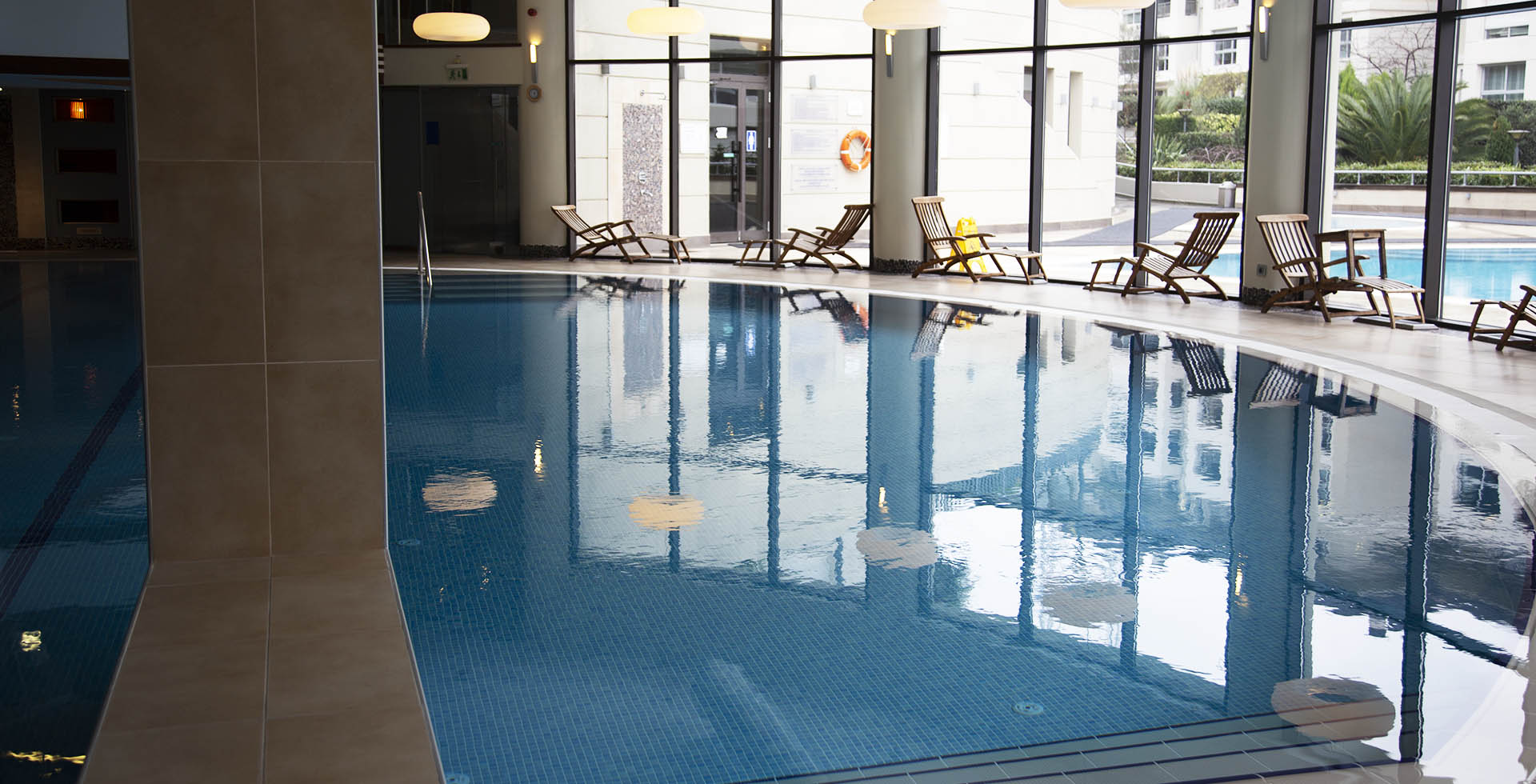
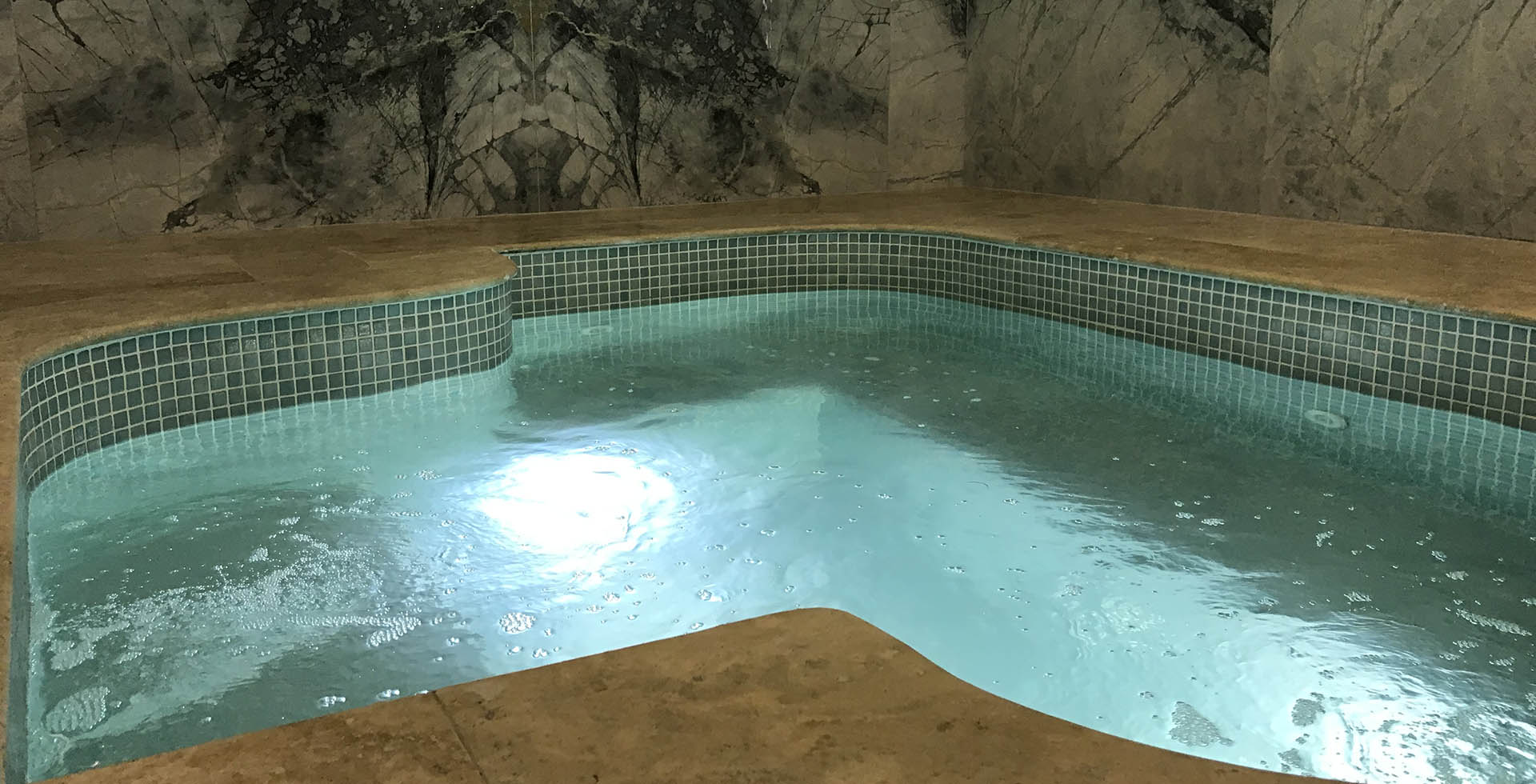
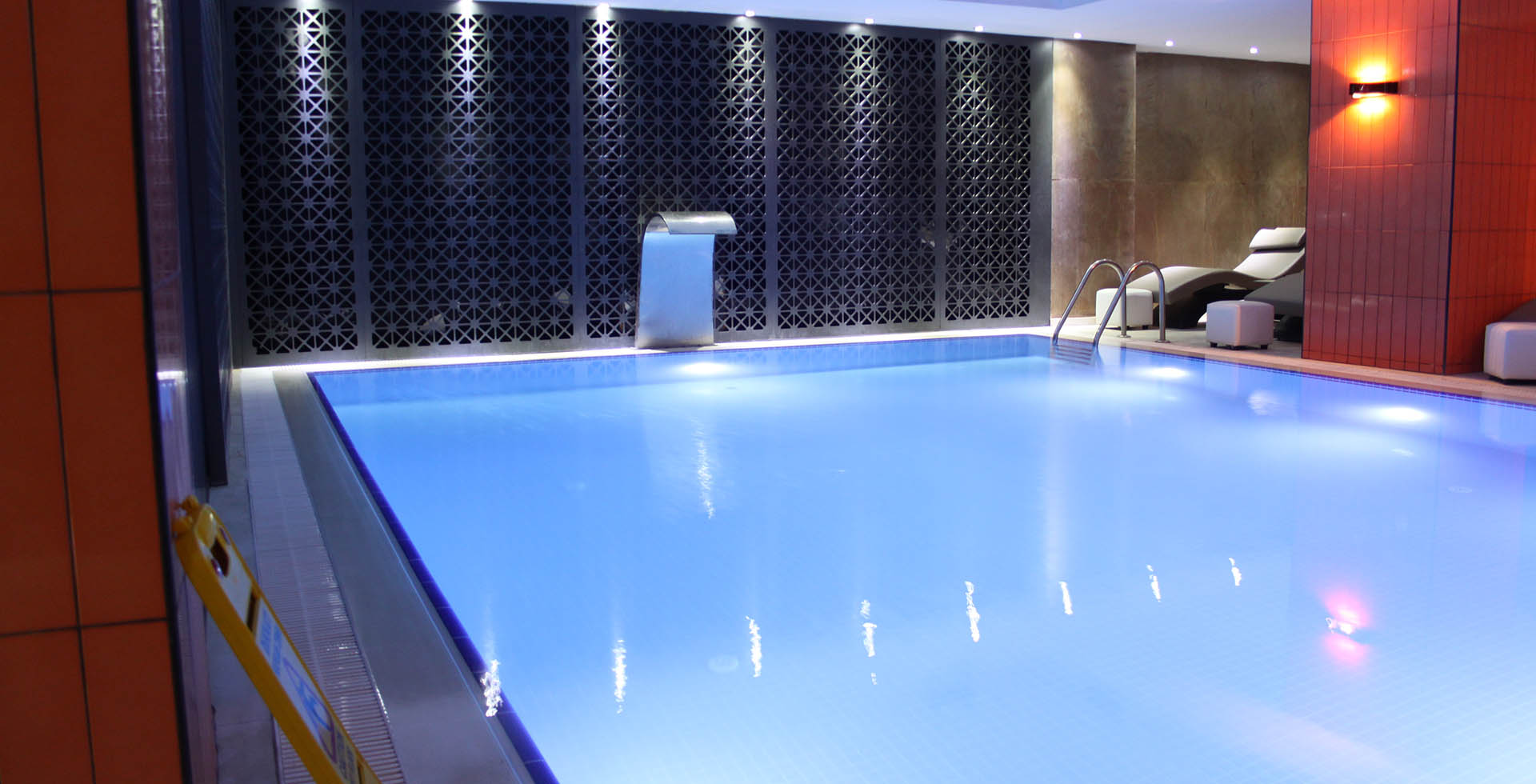
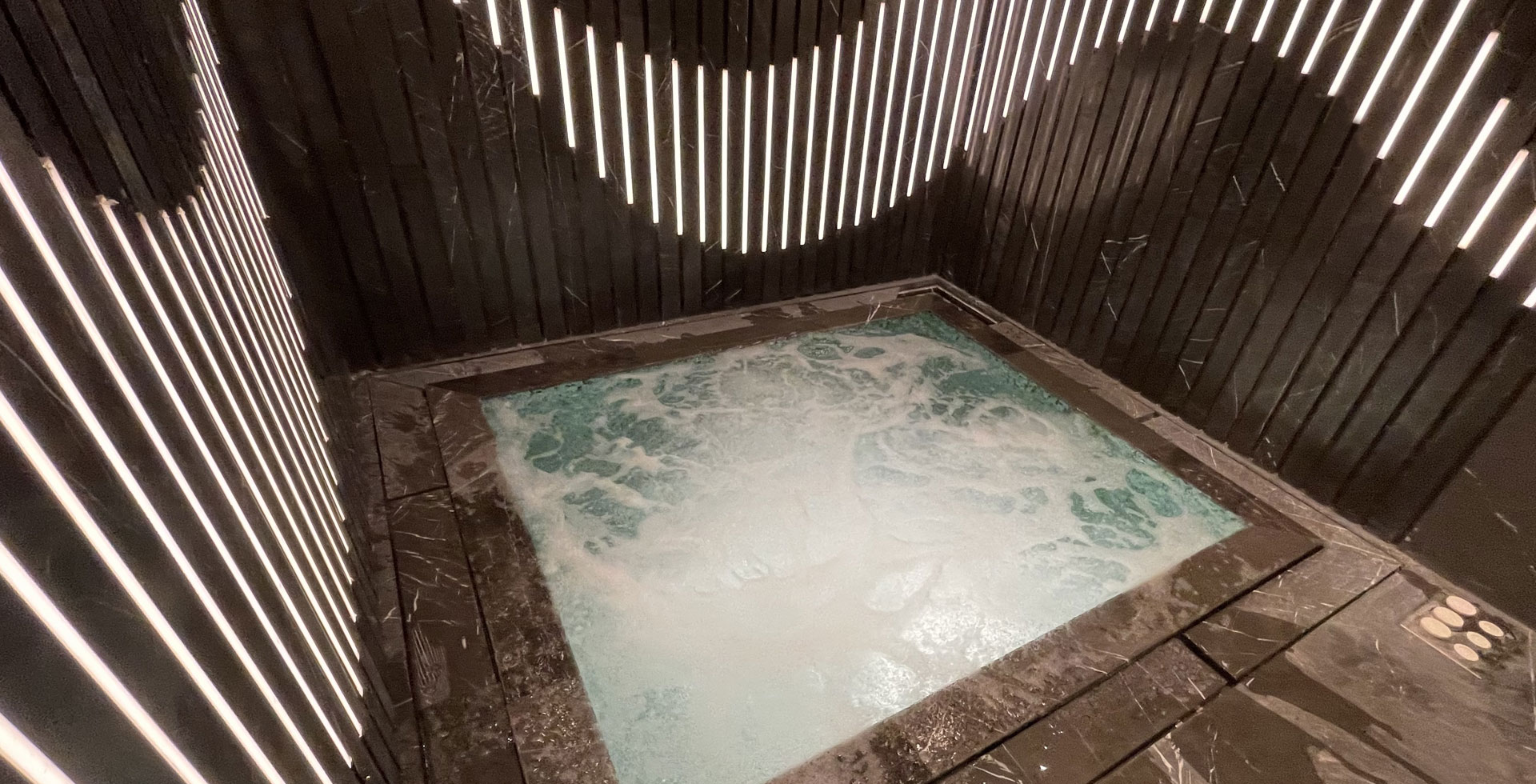
Let's talk
